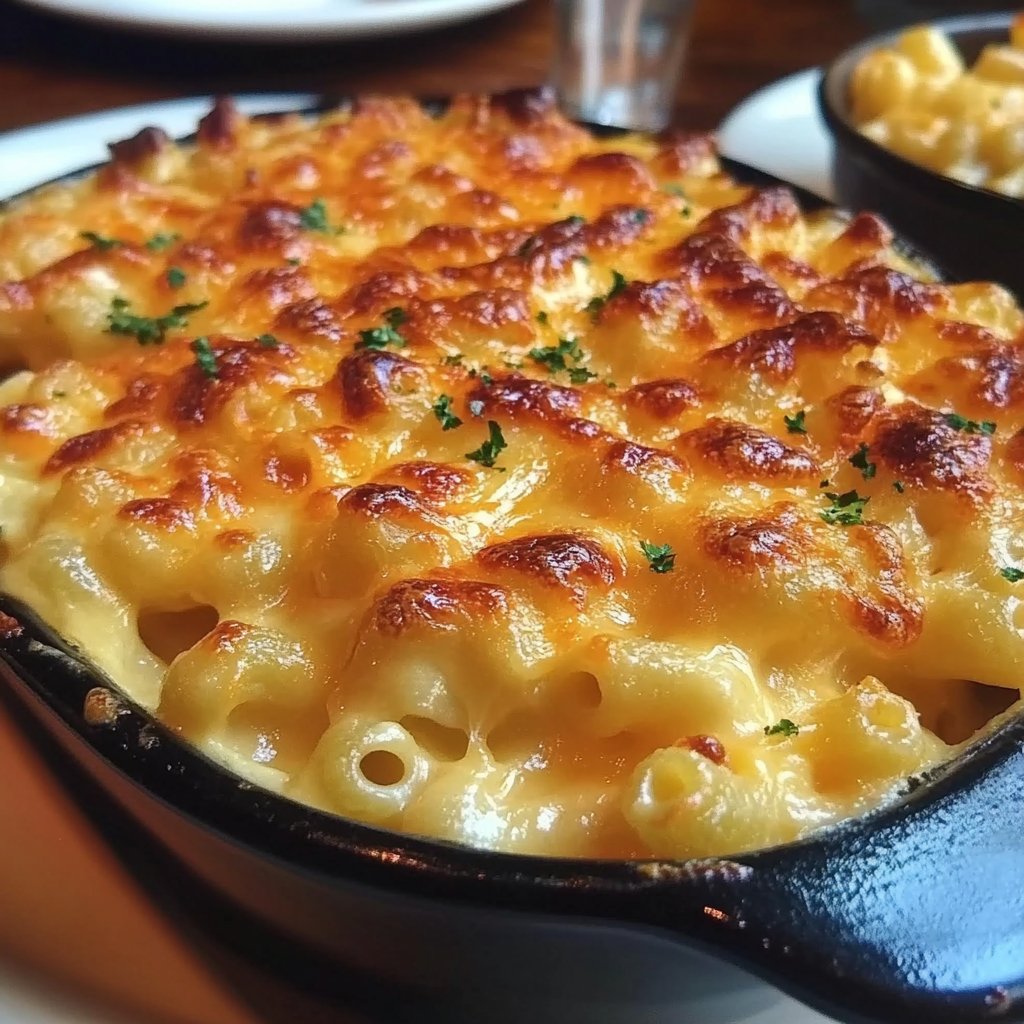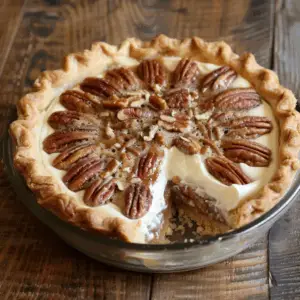Nothing beats a warm, creamy bowl of good old-fashioned mac and cheese. This classic comfort dish has been a favorite for generations, offering a perfect blend of cheesy goodness and tender pasta. While boxed versions are convenient, nothing compares to the rich, homemade version made from scratch.
A Brief History of Mac and Cheese
Macaroni and cheese has a long history, dating back to medieval Europe, where pasta and cheese were often combined. However, the dish became especially popular in the United States thanks to Thomas Jefferson, who discovered macaroni during his travels in Europe. He later introduced it to the American diet, making it a staple in Southern cuisine.
Over time, mac and cheese has evolved from a simple pasta-and-cheese combination to a gourmet dish featuring a variety of cheeses, seasonings, and toppings. Today, it’s enjoyed in many forms—whether as a quick stovetop mac and cheese or a rich, baked mac and cheese topped with crispy breadcrumbs.
Looking for inspiration? Check out these classic mac and cheese recipes on Pinterest to explore different variations.
Why Homemade Mac and Cheese is Better
While instant mac and cheese is convenient, making it from scratch offers several advantages:
- Better Ingredients – You can control the quality of the cheese, milk, and pasta, ensuring a richer, more flavorful dish.
- Customizable Flavor – Experiment with different cheeses like cheddar, mozzarella, and Gruyère to create a unique taste.
- Creamier Texture – Homemade cheese sauce ensures a smooth, velvety consistency without the artificial ingredients found in pre-packaged mixes.
- Healthier Alternative – By avoiding preservatives and processed cheese, homemade mac and cheese can be a more nutritious option.
For a deep dive into the history and variations of this beloved dish, visit the Macaroni and Cheese Wikipedia page.
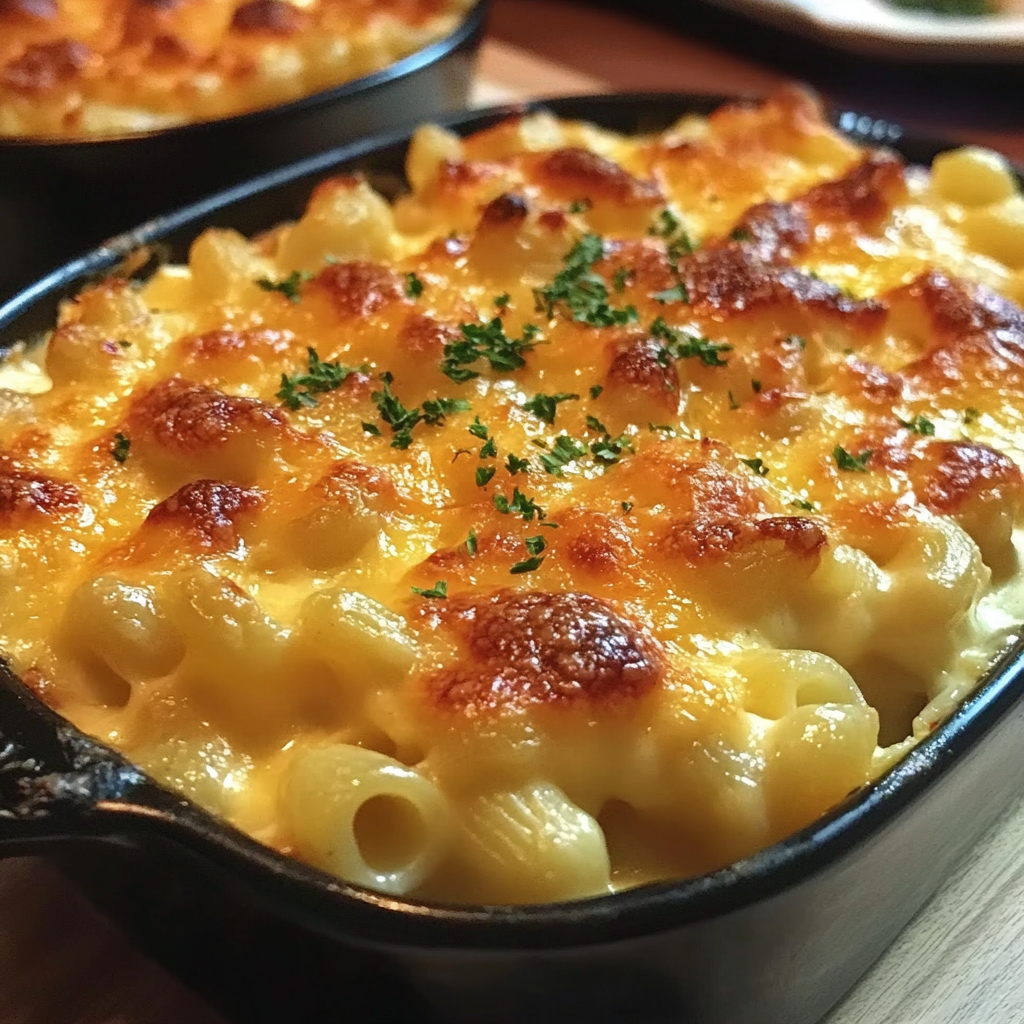
Essential Ingredients & Their Roles
Creating the perfect good old-fashioned mac and cheese starts with selecting the right ingredients. Each component plays a crucial role in achieving the creamy, cheesy, and satisfying texture that makes this dish a favorite.
Pasta Selection
Choosing the right pasta ensures the perfect mac and cheese consistency. While elbow macaroni is the classic choice, other pasta shapes can work just as well.
- Elbow Macaroni – The traditional shape, designed to hold the cheese sauce in its curves.
- Cavatappi – A corkscrew shape that provides extra texture and a better grip on the sauce.
- Shells – Perfect for trapping pools of creamy cheese sauce.
- Penne or Rigatoni – Works well for a heartier, baked mac and cheese version.
For more details on different pasta types and their best uses, explore this comprehensive pasta guide on Wikipedia.
Cheese Choices
The cheese you select will define the flavor and texture of your mac and cheese. A good combination includes a sharp cheddar for depth and a melty cheese like mozzarella for creaminess.
Best Cheeses for Mac and Cheese
- Sharp Cheddar – The most popular choice, offering a bold and slightly tangy flavor.
- Mozzarella – Adds a stretchy, creamy texture to the dish.
- Gruyère – Provides a nutty, rich taste and melts beautifully.
- Monterey Jack – A mild, creamy cheese that enhances the sauce’s smoothness.
- Gouda – Delivers a slightly sweet and smoky note, perfect for a gourmet twist.
Want to explore more about different cheese types? Check out the Cheddar Cheese Wikipedia page to learn why it’s a staple in mac and cheese.
Cheese Tips for the Best Mac and Cheese
- Always grate cheese from a block—pre-shredded cheeses contain anti-caking agents that prevent smooth melting.
- Use a combination of cheeses to balance flavor and texture.
- Stir in cheese gradually to prevent clumping and ensure a silky sauce.
Dairy & Creaminess Factors
The choice of dairy determines the richness and creaminess of your mac and cheese. Whole milk and heavy cream are ideal, but there are alternatives for different dietary needs.
- Whole Milk – The standard base for a creamy cheese sauce.
- Heavy Cream – Adds extra richness and a velvety texture.
- Half-and-Half – A lighter option that still provides creaminess.
- Evaporated Milk – A great alternative for a thicker consistency without using heavy cream.
If you’re interested in the role of dairy in cheese-making, visit the Mozzarella Wikipedia page to understand how different cheeses are crafted.
Seasoning & Flavor Enhancers
A well-seasoned mac and cheese takes the dish from good to unforgettable. While cheese provides most of the flavor, adding a few extra seasonings can elevate the taste.
- Salt – Enhances the overall flavor of the cheese.
- Black Pepper – Adds a mild heat and contrast to the creamy sauce.
- Paprika – Gives a subtle smokiness and depth to the dish.
- Garlic Powder – Provides an extra layer of savory richness.
- Mustard Powder – Balances the heaviness of the cheese sauce with a slight tang.
Optional Toppings & Variations
Toppings can add texture and flavor to your baked mac and cheese. While the classic version is creamy and smooth, a crispy top layer can bring extra crunch.
- Panko Breadcrumbs – Light and crispy, these create the perfect golden crust.
- Butter – Mixing melted butter with breadcrumbs enhances their crunchiness.
- Parmesan Cheese – Adds a slightly salty, nutty flavor to the topping.
- Bacon Bits – A smoky, crispy addition that complements the cheese.
- Crushed Crackers – A fun alternative to breadcrumbs, adding more crunch.
Looking for creative topping ideas? Check out these Mac and Cheese Toppings on Pinterest for inspiration.
With the right ingredients, your homemade mac and cheese will have the perfect balance of creaminess, flavor, and texture. Now, let’s dive into the step-by-step cooking instructions!
Step-by-Step Cooking Instructions
Making good old-fashioned mac and cheese from scratch is easier than you think! Follow these simple steps to achieve the perfect balance of creamy, cheesy goodness.
Preparing the Pasta
To get the best texture, cooking the pasta correctly is essential. Elbow macaroni is the traditional choice, but any pasta that holds sauce well will work.
- Boil the Water – In a large pot, bring 4 cups of water to a rolling boil.
- Add Salt – Stir in 1 teaspoon of salt to enhance the flavor of the pasta.
- Cook Until Al Dente – Add 12 ounces of elbow macaroni and cook according to the package instructions until al dente (firm but tender). Overcooking can result in mushy mac and cheese.
- Drain and Set Aside – Drain the pasta and rinse with a little warm water to prevent sticking. Set it aside while you prepare the cheese sauce.
Making the Cheese Sauce
The key to a smooth, creamy cheese sauce is a properly made roux, which thickens the sauce and helps the cheese blend seamlessly.
1. Prepare the Roux
- In a medium saucepan over medium heat, melt 2 tablespoons of butter.
- Once melted, whisk in 2 tablespoons of all-purpose flour.
- Stir continuously for about 1 minute until the mixture turns golden. This removes the raw flour taste.
Want to understand the science behind this technique? Learn more about Roux on Wikipedia.
2. Add the Dairy
- Gradually pour in 2 cups of whole milk, whisking constantly to prevent lumps.
- Add 1 cup of heavy cream and continue whisking until the mixture thickens slightly.
3. Melt the Cheese
- Reduce the heat to low and add:
- 2 cups of shredded sharp cheddar cheese
- 1 cup of shredded mozzarella cheese
- Stir until the cheese is fully melted and the sauce becomes smooth.
Pro Tip: For the best melting results, always use freshly shredded cheese instead of pre-shredded cheese, which contains anti-caking agents that prevent smooth melting.
4. Season the Sauce
- Stir in ½ teaspoon of salt, ½ teaspoon of black pepper, and ½ teaspoon of paprika (optional) for extra flavor.
- Taste and adjust seasoning as needed.
Combining Pasta and Sauce
- Add the cooked pasta to the cheese sauce, stirring until every piece is well coated.
- If the sauce is too thick, add a splash of warm milk to loosen it.
- If you prefer a stronger cheese flavor, mix in an extra handful of sharp cheddar.
At this stage, your mac and cheese is ready to serve as a stovetop version, or you can take it to the next level by baking it for a golden, crispy topping.
Baking for a Crispy Topping (Optional)
If you love a crunchy texture, baking your mac and cheese is a great option.
- Preheat the oven to 375°F (190°C).
- Transfer the mac and cheese to a greased baking dish.
- Prepare the topping:
- In a small bowl, mix ½ cup of panko breadcrumbs with 2 tablespoons of melted butter.
- Spread the mixture evenly over the top.
- Bake for 15-20 minutes until the topping is golden brown and crispy.
Looking for more creative baked mac and cheese ideas? Explore these Baked Mac and Cheese Recipes on Pinterest.
Once baked, let the mac and cheese sit for 5 minutes before serving. This allows the sauce to thicken slightly, ensuring every bite is rich and delicious.
Now that you’ve mastered the basic recipe, let’s explore some popular variations of mac and cheese!
Popular Variations of Mac and Cheese
While good old-fashioned mac and cheese is already a perfect dish, there are countless ways to customize it to suit different tastes. Whether you prefer a creamy stovetop version, a crunchy baked topping, or unique mix-ins, these variations will take your mac and cheese to the next level.
Stovetop vs. Baked Mac and Cheese
One of the biggest debates among mac and cheese lovers is whether to serve it stovetop-style or baked. Each method has its pros and cons:
Stovetop Mac and Cheese
✅ Quick & Easy – Ready in under 30 minutes.
✅ Ultra Creamy – No risk of drying out in the oven.
✅ Kid-Friendly – Smooth and saucy, perfect for picky eaters.
💡 Best for those who love a silky, cheesy sauce without a crunchy topping.
Baked Mac and Cheese
✅ Golden & Crispy – Panko breadcrumbs create a crunchy crust.
✅ Richer Flavor – Baking deepens the cheese flavors.
✅ Perfect for Gatherings – Holds up well for potlucks and family meals.
💡 Best for those who love a hearty, oven-baked dish with a toasted finish.
Not sure which one to try? Check out these Baked vs. Stovetop Mac and Cheese Recipes on Pinterest.
Adding Proteins
If you want to turn mac and cheese into a full meal, adding protein is a great option. Here are some delicious additions:
- Grilled Chicken – Adds lean protein and pairs well with creamy cheese sauce.
- Bacon Crumbles – A smoky, crispy contrast to the soft pasta.
- Ground Beef – Turns mac and cheese into a cheesy hamburger-style dish.
- Pulled Pork – A Southern-inspired twist with a rich, smoky flavor.
Looking for more protein-packed variations? Try these Mac and Cheese with Meat Recipes on Pinterest.
Spicy Mac and Cheese
If you love heat, adding spice to mac and cheese can elevate the flavors:
🔥 Jalapeños – Fresh or pickled slices add a mild kick.
🔥 Cayenne Pepper – A small pinch gives a slow-building heat.
🔥 Hot Sauce – Stir in a few drops for an extra punch.
🔥 Pepper Jack Cheese – A built-in spicy cheese option.
For a bold, fiery version, try combining cheddar with pepper jack cheese and topping it with crushed spicy tortilla chips!
Gluten-Free & Vegan Options
If you have dietary restrictions, you can still enjoy mac and cheese with these easy substitutions:
Gluten-Free Mac and Cheese
✔ Use gluten-free pasta (rice, quinoa, or chickpea-based).
✔ Replace all-purpose flour with gluten-free flour for the roux.
✔ Opt for gluten-free breadcrumbs or crushed nuts for the topping.
Vegan Mac and Cheese
✔ Use dairy-free cheese (cashew-based or nutritional yeast for a cheesy flavor).
✔ Swap whole milk for almond, soy, or oat milk.
✔ Replace butter with vegan butter or olive oil.
Need more inspiration? Check out these Vegan Mac and Cheese Recipes on Pinterest.
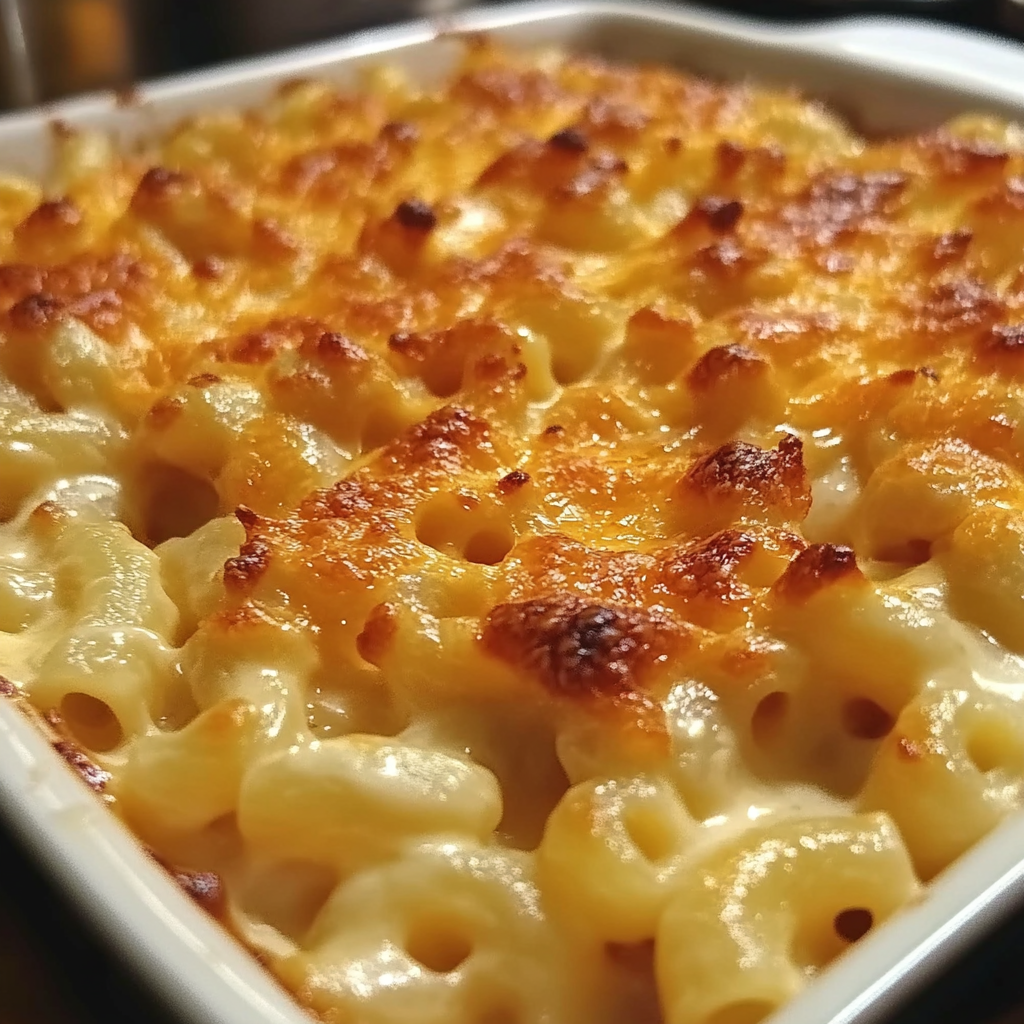
Tips & Tricks for the Best Mac and Cheese
Making good old-fashioned mac and cheese might seem simple, but a few expert techniques can take it from good to absolutely perfect. Whether you’re aiming for an ultra-creamy stovetop version or a crispy baked dish, these tips will help you get the best results every time.
How to Prevent a Grainy Cheese Sauce
One of the most common mistakes when making mac and cheese is ending up with a grainy or curdled sauce. To keep your sauce smooth and creamy, follow these key steps:
✔ Use Freshly Shredded Cheese – Pre-shredded cheese contains anti-caking agents that prevent it from melting smoothly. Always shred your cheese from a block.
✔ Lower the Heat – When adding cheese to the sauce, keep the heat on low. High heat can cause the cheese proteins to separate, resulting in a grainy texture.
✔ Add Cheese Gradually – Stir in cheese a handful at a time, allowing each batch to fully melt before adding more.
✔ Use a Creamy Base – Combining whole milk with heavy cream helps maintain a silky texture. If your sauce looks too thick, add a splash of warm milk.
Want to learn more about how cheese melts? Check out this Wikipedia article on Cheddar Cheese to understand why certain cheeses work best for mac and cheese.
Keeping Mac and Cheese Creamy (Even After Baking!)
Nobody likes dried-out mac and cheese! Here’s how to maintain that perfect creamy texture, even when baking:
✔ Use Enough Sauce – Your pasta should be extra saucy before baking, as it will absorb liquid while cooking.
✔ Cover While Baking – To prevent excessive drying, cover the dish with foil for the first 10 minutes, then remove it to brown the topping.
✔ Avoid Overbaking – Bake just until the topping is golden, about 15-20 minutes. Overbaking can dry out the dish.
✔ Add a Cheese Layer – Sprinkling extra shredded cheddar on top before baking helps lock in moisture.
For more ideas on creamy baked mac and cheese, explore these Baked Mac and Cheese Ideas on Pinterest.
Reheating Leftovers Without Losing Texture
Mac and cheese is best when fresh, but if you have leftovers, reheating it correctly is essential to keep it from drying out.
🔥 Stovetop Method (Best Option)
- Place leftover mac and cheese in a saucepan.
- Add a splash of milk or heavy cream to loosen the sauce.
- Heat over low-medium heat, stirring frequently until warm and creamy.
🔥 Oven Method (For Baked Mac and Cheese)
- Preheat oven to 350°F (175°C).
- Place leftovers in an oven-safe dish and stir in a little milk.
- Cover with foil and bake for 15-20 minutes, stirring once halfway through.
🔥 Microwave Method (Quickest, but Risky)
- Place mac and cheese in a microwave-safe bowl.
- Add 1-2 tablespoons of milk and stir.
- Heat in 30-second intervals, stirring between each round until warmed through.
For an extra indulgent twist, add a little more shredded cheese on top before reheating!
Did you know? Mac and cheese can also be frozen for up to 2 months. To reheat, thaw in the fridge overnight and warm using the stovetop or oven method.
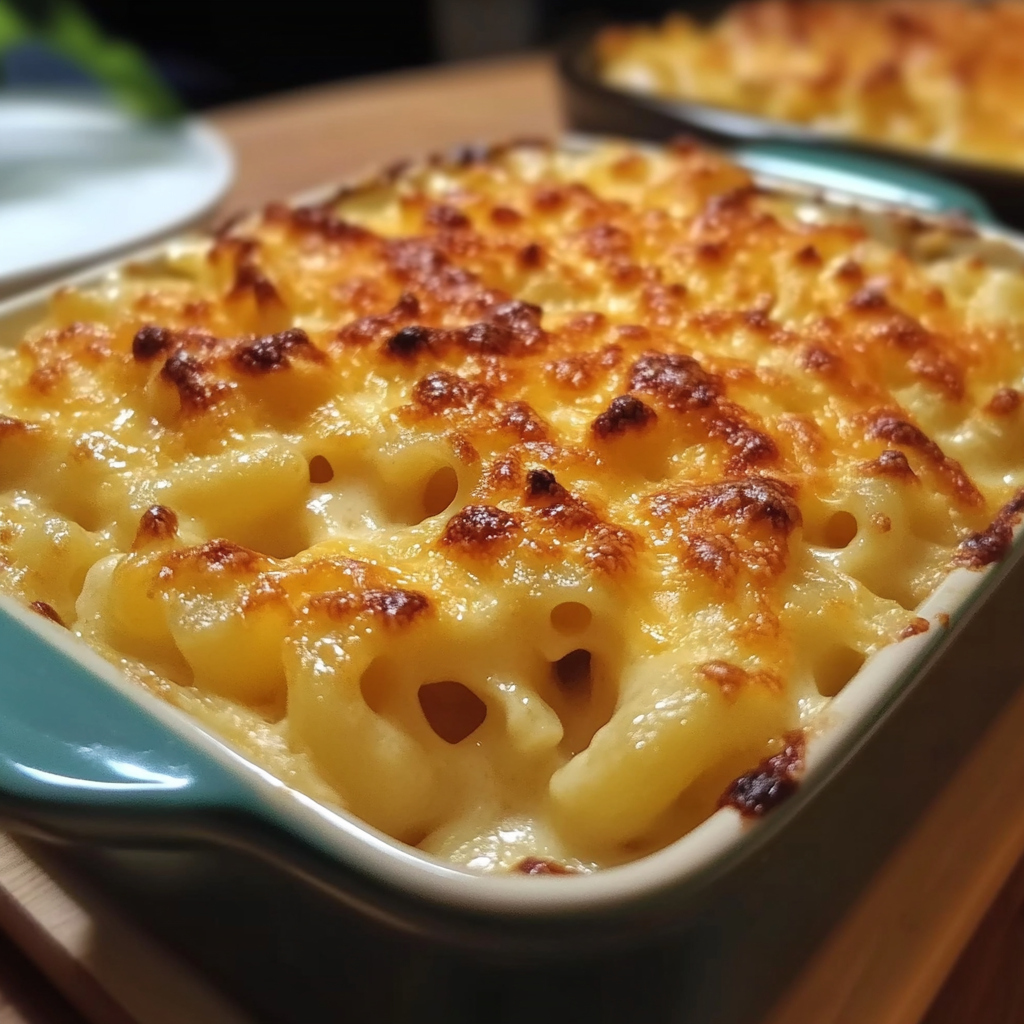
FAQs: Frequently Asked Questions About Mac and Cheese
Many home cooks have questions about making the perfect mac and cheese. Here are answers to some of the most common questions to help you master this classic dish.
What is the best cheese combination for mac and cheese?
The best mac and cheese uses a blend of melty, flavorful cheeses. A good combination includes:
✔ Sharp Cheddar – Provides a bold, tangy flavor.
✔ Mozzarella – Adds creaminess and stretchiness.
✔ Gruyère – Offers a nutty, slightly sweet taste.
✔ Monterey Jack – Smooth, mild, and creamy.
✔ Gouda – Gives a slightly smoky and rich depth.
For more cheese options, visit the Mozzarella Wikipedia page to learn about different cheese textures and flavors.
Can I make mac and cheese ahead of time?
Yes! You can prepare mac and cheese ahead of time, but follow these steps to keep it creamy:
✔ For Stovetop Mac and Cheese – Store the cheese sauce and pasta separately. When ready to serve, reheat the sauce and stir in freshly cooked pasta.
✔ For Baked Mac and Cheese – Assemble the dish, but don’t bake it. Cover and refrigerate for up to 24 hours, then bake just before serving.
💡 If the sauce thickens too much, stir in a splash of warm milk or cream before reheating.
How do I prevent my cheese sauce from becoming gritty?
A gritty sauce is usually caused by overheating the cheese or using the wrong type. To prevent this:
✔ Use fresh, high-quality cheese (not pre-shredded).
✔ Keep the heat low when adding cheese to the sauce.
✔ Stir constantly to create a smooth texture.
Learn more about the science of cheese melting by visiting the Cheddar Cheese Wikipedia page.
Can I freeze mac and cheese?
Yes, mac and cheese can be frozen for up to 2 months. However, for the best texture:
✔ Freeze before baking – Assemble the dish, wrap it tightly, and freeze unbaked.
✔ Thaw in the fridge overnight before reheating.
✔ Reheat with extra milk to restore creaminess.
💡 For baked mac and cheese, freezing may dry out the sauce. Add a bit of extra cheese sauce before reheating.
PrintHomemade Mac and Cheese
This good old-fashioned mac and cheese recipe is the ultimate comfort food, combining creamy, cheesy goodness with perfectly cooked elbow macaroni. Made with a rich blend of sharp cheddar and mozzarella, this dish is smooth, flavorful, and irresistibly satisfying. Whether served as a quick stovetop mac and cheese or baked with a crispy panko breadcrumb topping, this homemade version is far superior to any store-bought alternative.
Perfect for weeknight dinners, family gatherings, or holiday feasts, this recipe is easy to customize with different cheeses, proteins, or seasonings. Follow the step-by-step instructions to create the creamiest mac and cheese every time!
- Author: Clara
Ingredients
For the pasta:
- 12 oz elbow macaroni
- 4 cups water (for boiling)
- 1 tsp salt
For the cheese sauce:
- 2 tbsp butter
- 2 tbsp all-purpose flour
- 2 cups whole milk
- 1 cup heavy cream
- 2 cups sharp cheddar cheese, shredded
- 1 cup mozzarella cheese, shredded
- ½ tsp salt
- ½ tsp black pepper
- ½ tsp paprika (optional)
For the topping (optional):
- ½ cup panko breadcrumbs
- 2 tbsp butter, melted
Instructions
Bring a large pot of salted water to a boil. Cook the elbow macaroni until al dente, then drain and set aside.
In a saucepan over medium heat, melt butter, then whisk in the flour to form a roux. Cook for about one minute until golden.
Gradually whisk in the milk and heavy cream, stirring continuously until smooth and slightly thickened.
Add the shredded cheddar and mozzarella cheese, stirring until melted and creamy.
Season with salt, black pepper, and paprika if using.
Add the cooked macaroni to the cheese sauce, stirring to coat evenly.
For a baked version, preheat the oven to 375°F (190°C). Transfer the mac and cheese to a baking dish.
Mix panko breadcrumbs with melted butter and sprinkle over the top. Bake for 15-20 minutes until golden brown.
Serve warm and enjoy.
Notes
✔ Pasta Choice – Elbow macaroni is the traditional choice, but you can use cavatappi, shells, or penne for different textures.
✔ Cheese Tips – Always grate cheese from a block for the best melting consistency. Avoid pre-shredded cheese, which contains anti-caking agents.
✔ Stovetop vs. Baked – If you prefer a creamy texture, serve immediately after mixing the pasta with the sauce. For a crispy topping, bake at 375°F (190°C) for 15-20 minutes.
✔ Make-Ahead Option – Assemble and refrigerate for up to 24 hours before baking. Add a splash of milk when reheating to maintain creaminess.
✔ Storage & Reheating – Store leftovers in an airtight container in the fridge for up to 3 days. Reheat with a little milk on the stovetop for the best results.
✔ Freezing Instructions – Freeze unbaked mac and cheese for up to 2 months. Thaw in the fridge overnight before baking.
